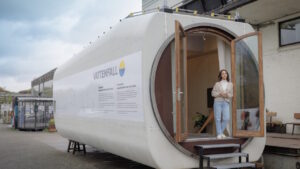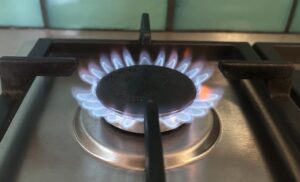The Australian Energy Market Operator is to resume the connection process for new large scale wind and solar projects in the West Murray section of the main grid, and hopes to connect around 1,200MW of new capacity within the next 12 months after lifting constraints on five solar farms late on Friday.
As RenewEconomy reported on Friday, a week-long series of testing for new inverter “firmware” for five solar farms in north west Victoria and western NSW proved successful, prompting AEMO to provisionally lift the constraint that had cut the output by half since early September.
Those five solar farms – Broken Hill in NSW, and the Bannerton, Gannawarra, Karadoc and Wemen solar farms in Victoria, are now allowed to operate all their inverters after the new firmware eliminated the risk of uncontrolled oscillations and voltage issues should a major transmission link fail.
The curtailment slashed tens of millions of dollars from the revenue of the five solar farms, and had a contagion effect on other projects, as AEMO halted the connection process for around two dozen different projects, some of them already largely complete – with solar modules or turbines installed – and waiting for the connection and commissioning process to begin.
In a letter to stakeholders late on Friday, AEMO’s head of engineering Alex Wonhas said the successful testing would allow AEMO to lift the constraints and to progress new connection applications for some 23 projects in the West Murray region, which straddles parts of Victoria and NSW (see graph above).
“AEMO is aiming to have all committed projects in the sequence connected by early 2021, where possible,” Wonhas wrote.
“When AEMO is ready to assess a project, the project needs to meet the criteria to proceed, which includes the preparation of complete and compliant supporting data to allow the assessment to proceed without delay.”
Wonhas included an “anonymised” table showing the rough timeline for 23 un-named projects and when their detailed network modelling – known as PSCAD – would be assessed. The exact order of connection is the subject of intense speculation – and commercial jealousy – from the projects jockeying for position and connection.
AEMO refuses to reveal the priority projects, although each proponent knows where in the table above their project lies (the top five are the five solar farms affected by the curtailment).
But RenewEconomy has previously reported that those at or near the top of the list – from number six on and in no particular order that we know – include the Yatpool, Kiamal and Cohuna solar farms in Victoria, the Murra Warra and Bulgana wind projects in Victoria, and the Limondale, Sunraysia and Darlington Point solar projects in NSW.
AEMO has warned that it will only connect “as many as that can be connected securely”. The media term outlook for new capacity in the West Murray region will also depend on finding a solution to the “system strength” issues on what is regarded as one of the weakest parts of the national grid.
The declaration of a shortfall late last year prompted a search for solutions, likely to include the sort of synchronous condensers that are being installed at the Kiamal solar farm. The AEMO letter to stakeholders said negotiations continue with several proponents to provide additional short-term system strength by July 31.
“We will keep the market informed over the coming weeks as those negotiations conclude,” Wonhas wrote in the letter.
Other projects in the pipeline will likely have to wait longer, with AEMO previously warning that over the long term capacity issues were only likely to be solved with new transmission capacity, such as a new link to NSW. That, however, could take seven years for a new link to be built, even if Australia’s notoriously slow regulatory process is accelerated.
The resolution to the oscillation and voltage issues in West Murray – an area of the grid that has also been dubbed the “rhombus of regret” because of the shape of the network, and the bottlenecks that have frustrated development – is seen as an important signal that issues can be resolved as the clean energy transition accelerates, and the switch to more inverter based technologies (wind, solar, battery storage) continues.
Wonhas says the solution – although much delayed from the initial assessment of just a few weeks – required significant effort and support from the solar farms, their inverter manufacturer SMA, transmission companies Powercor and Transgrid, the Clean Energy Council and AEMO.
SMA, whose inverters were (by coincidence and not causation) common to all affected solar farms, also suggested that the new “firmware” could be replicated in other areas of the grid and would enhance the ability to grow the share of renewables in the grid.
“It’s a great relief to be back at 100 per cent,” says David Shapero, the head of Bay-Wa in Australia, which owns the Karadoc solar farm and the Yatpool solar project. “It’s been a very difficult period that has cost us a lot of money. It underlines once again the need for more new transmission lines within the system.”
Edify CEO and Founder John Cole said his company was “extremely pleased” to have concluded the local and wide area network tests for Gannawarra Solar Farm and the anticipated return to full unconstrained export.
Clean Energy Council director of energy transformation Lillian Patterson said it was a “mammoth collective effort” to address the technical challenge. “The industry looks forward to continuing to work collaboratively with AEMO and network businesses to progress new renewable energy connections in the West Murray Zone in a secure way,” she said.
RenewEconomy and its sister sites One Step Off The Grid and The Driven will continue to publish throughout the Covid-19 crisis, posting good news about technology and project development, and holding government, regulators and business to account. But as the conference market evaporates, and some advertisers pull in their budgets, readers can help by making a voluntary donation here to help ensure we can continue to offer the service free of charge and to as wide an audience as possible. Thankyou for your support.













